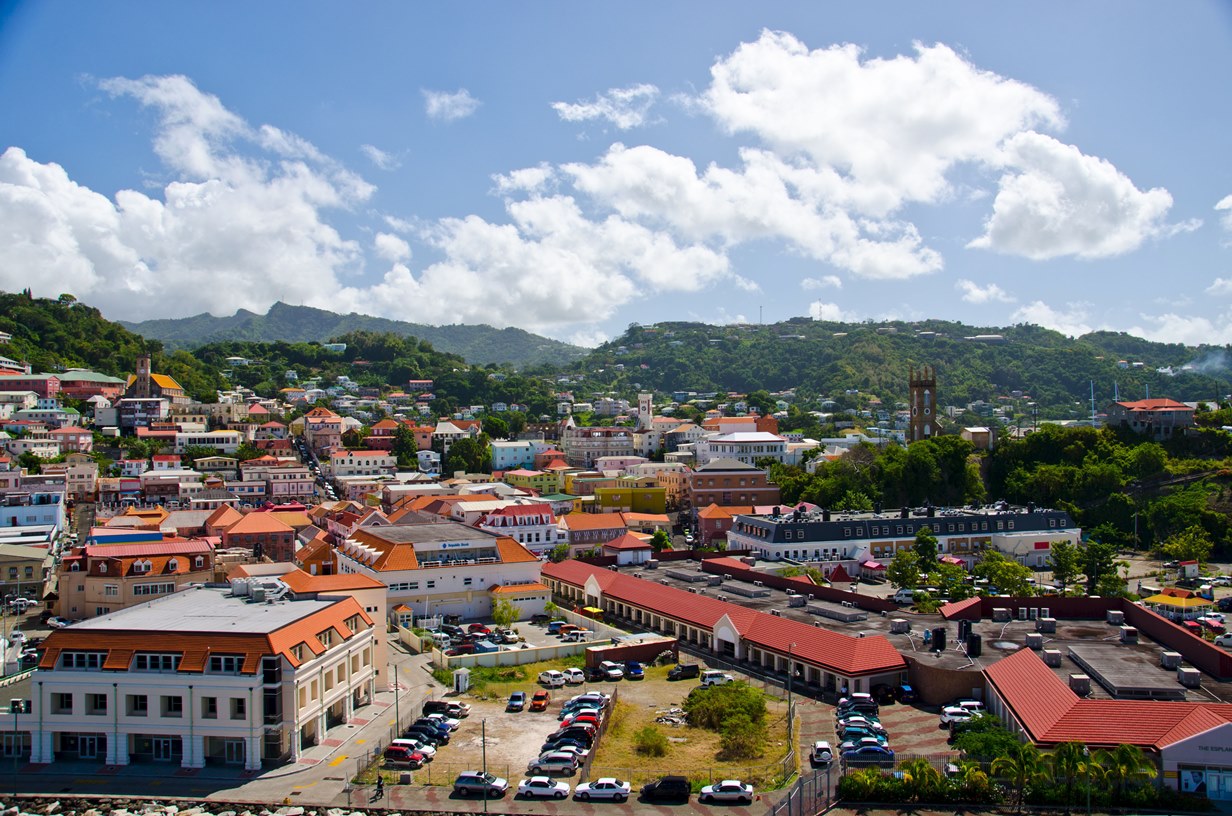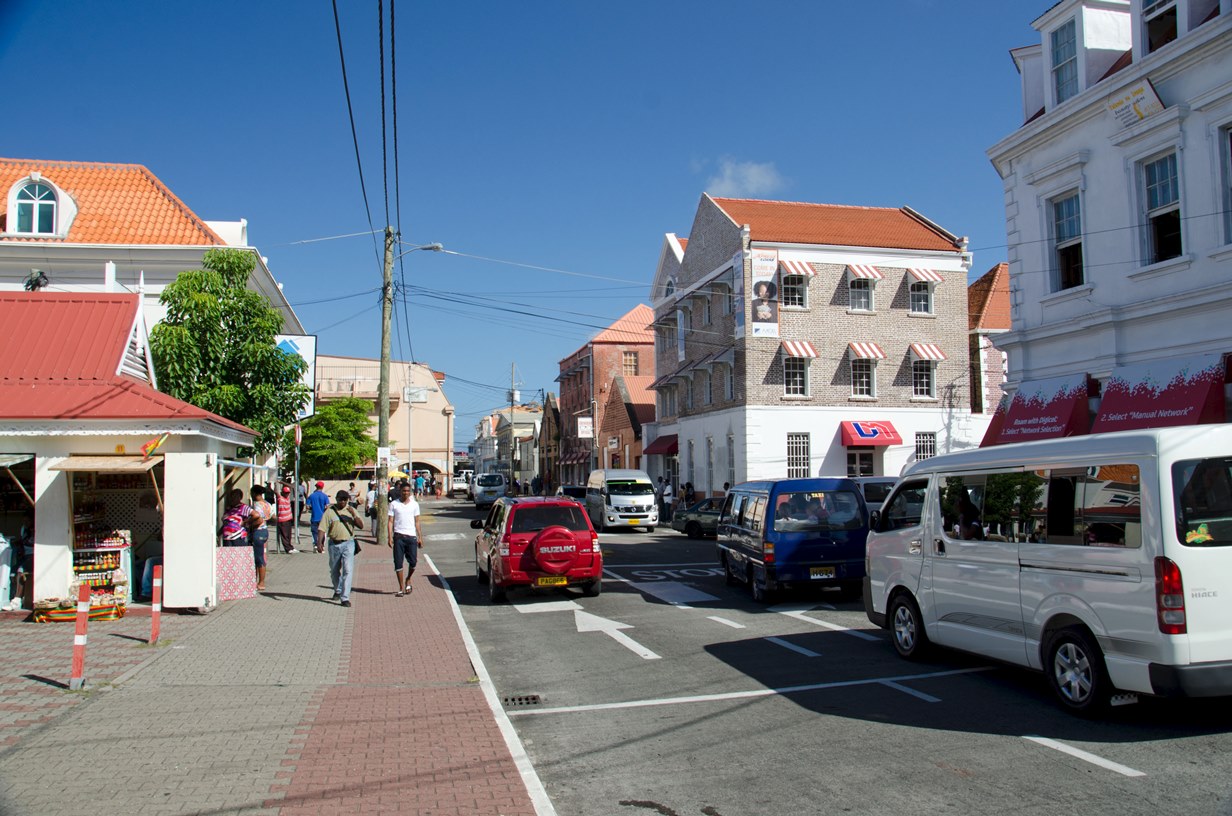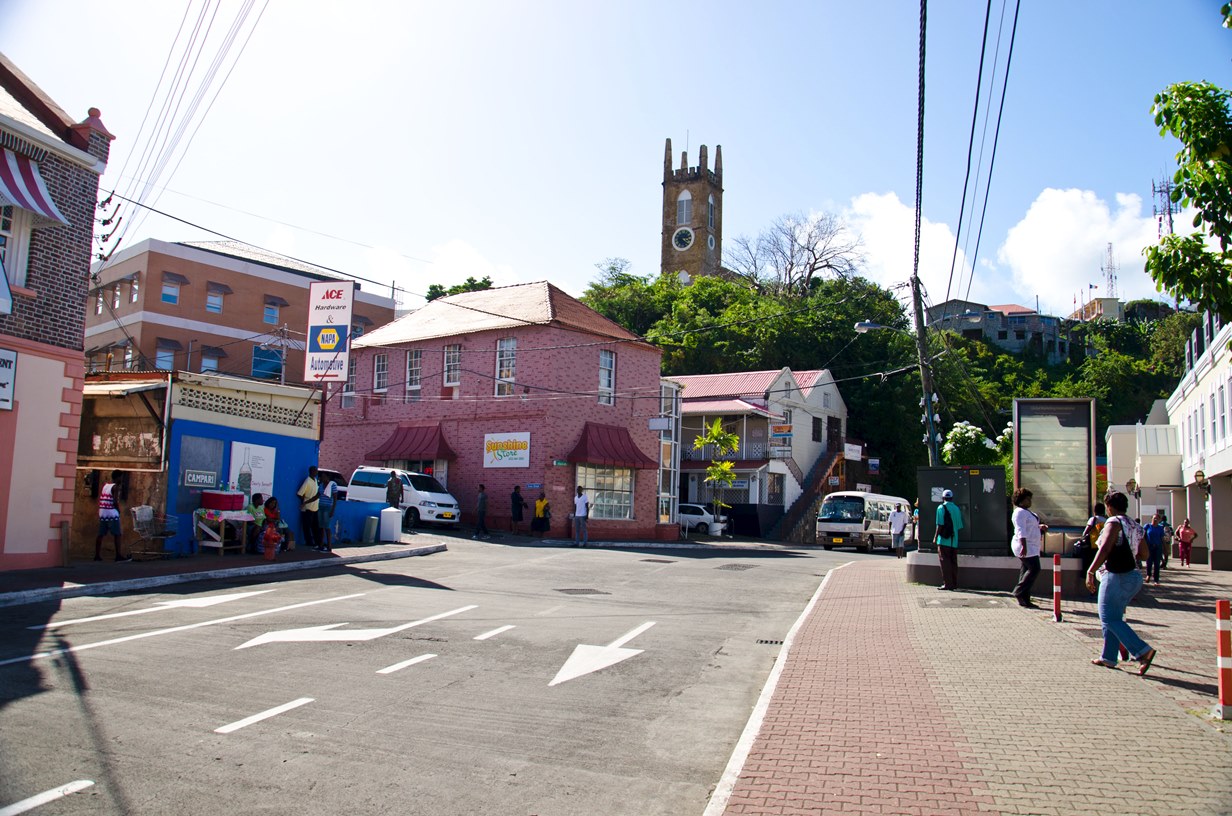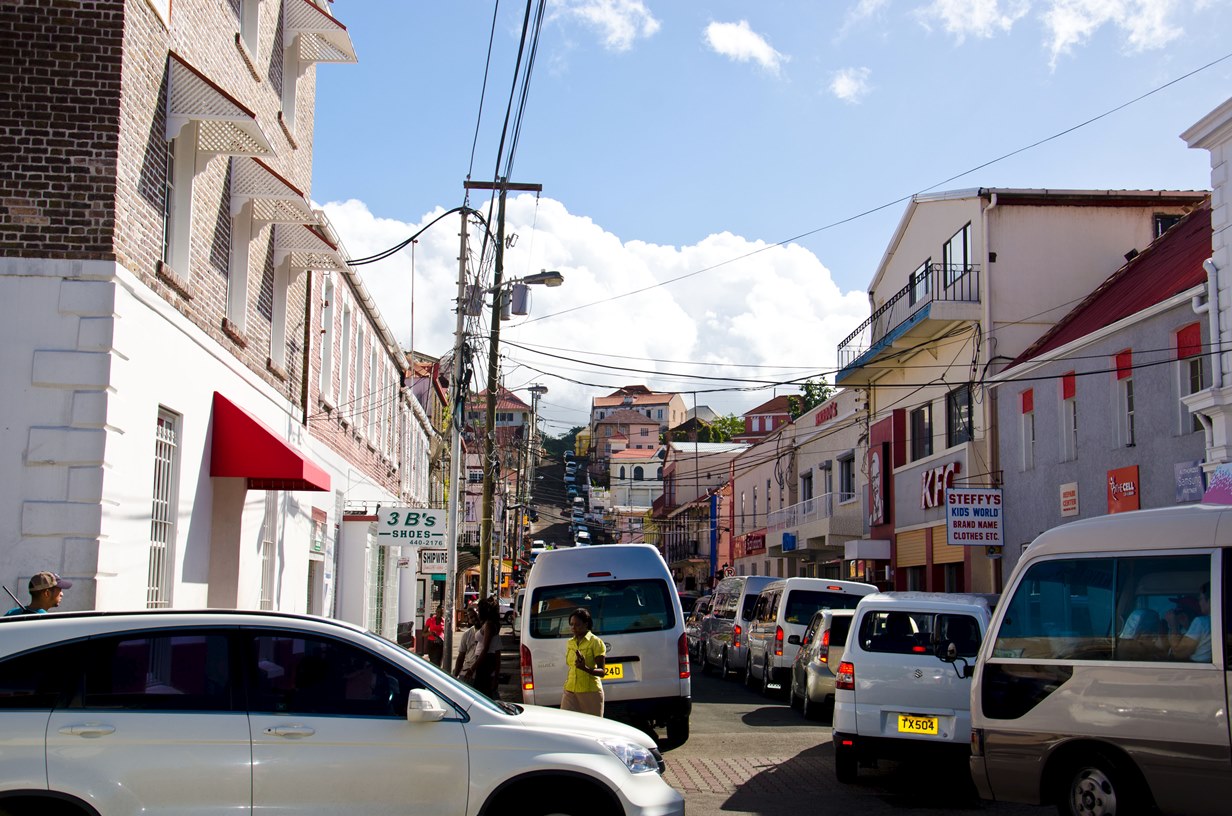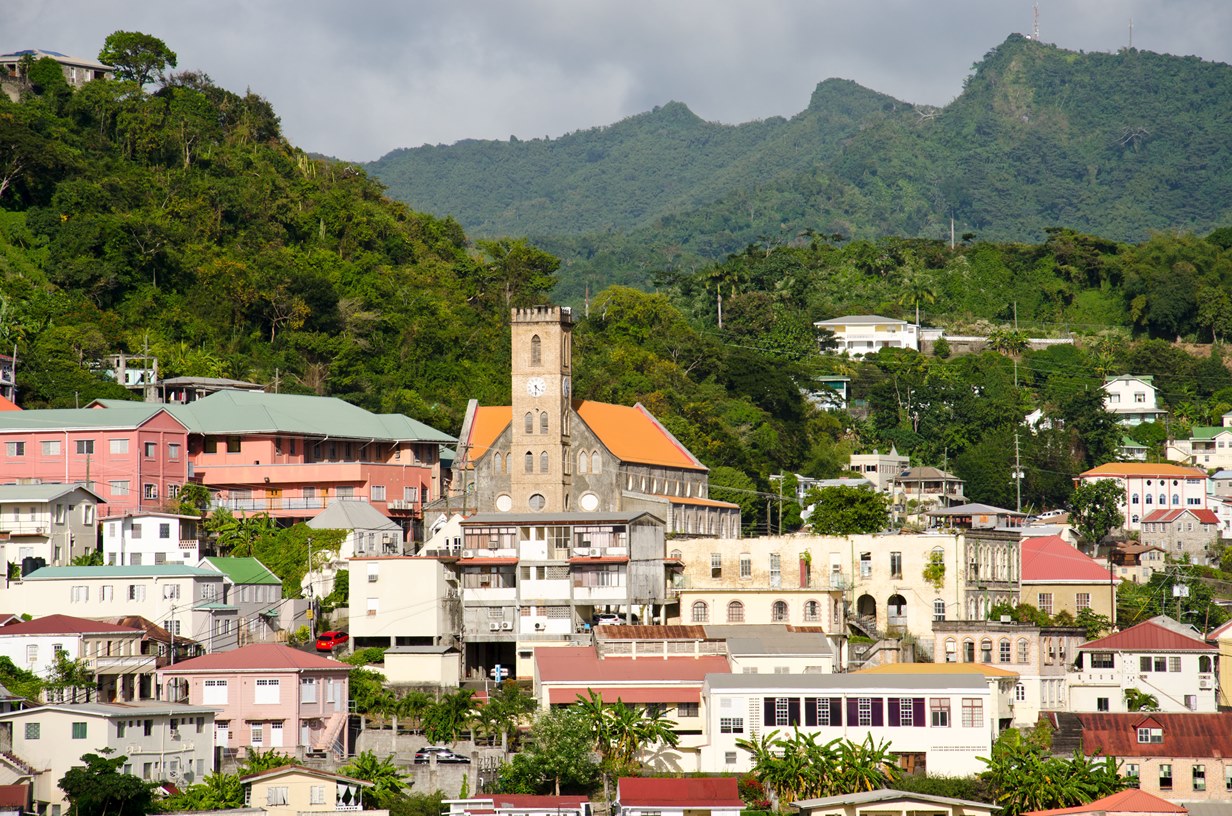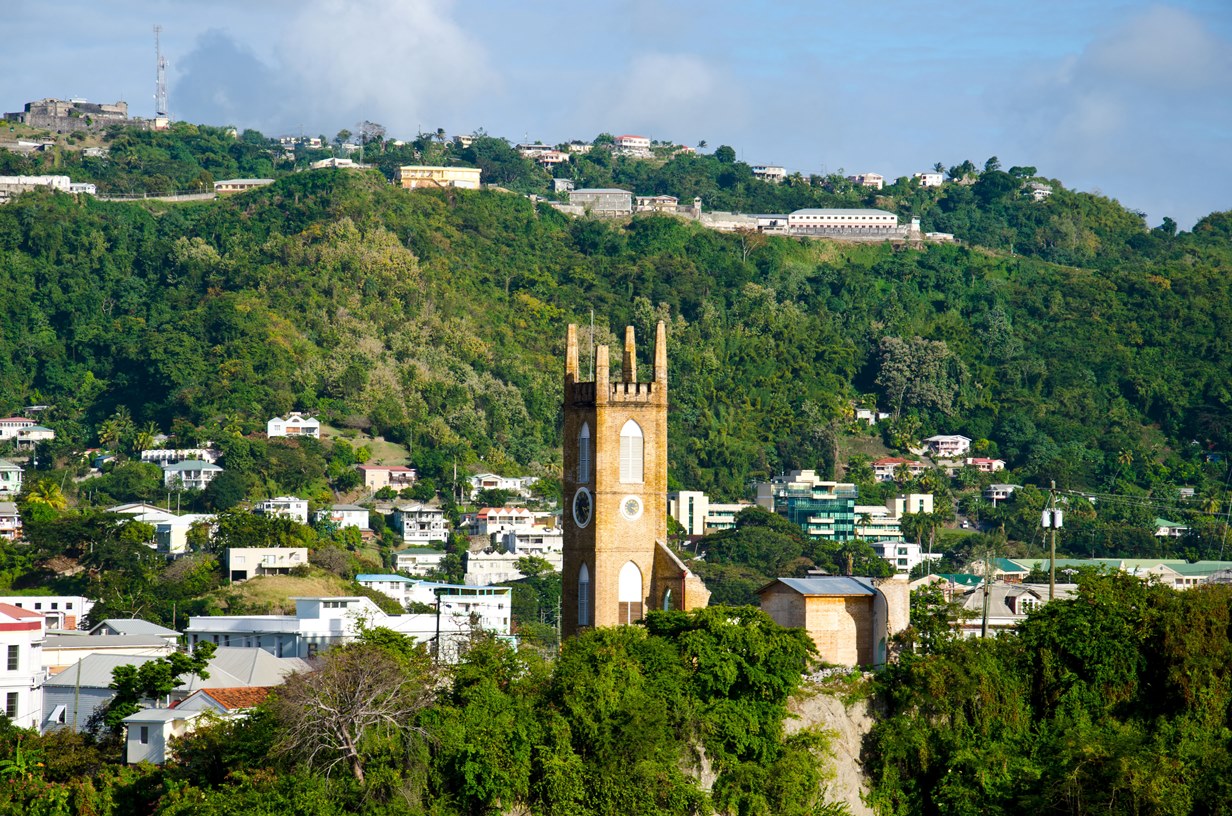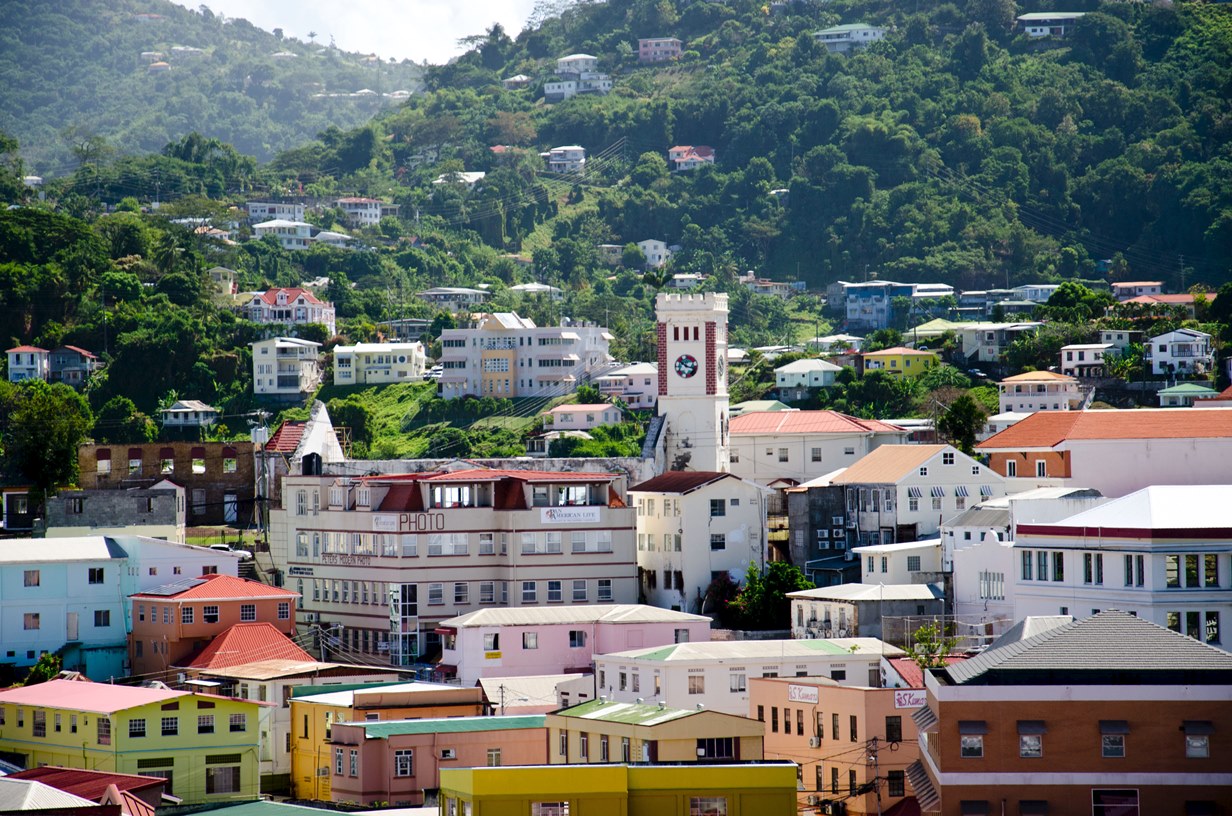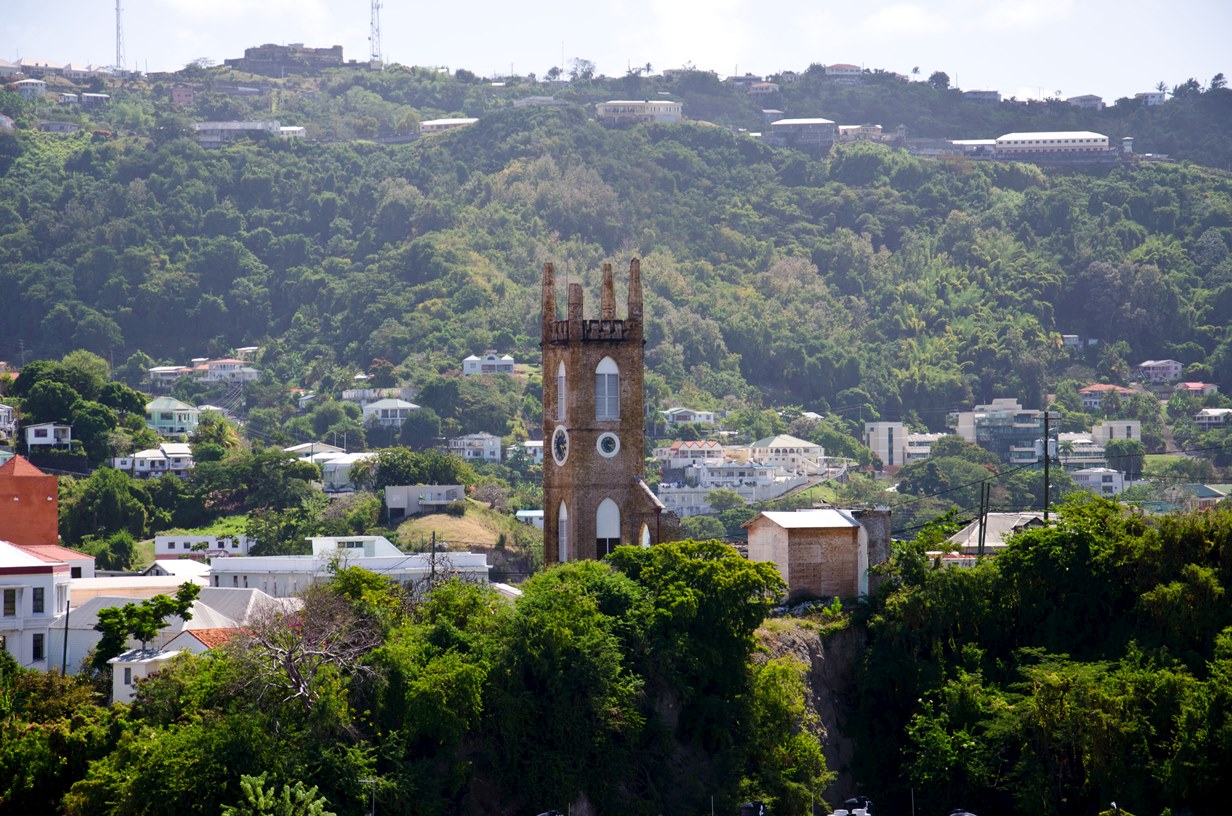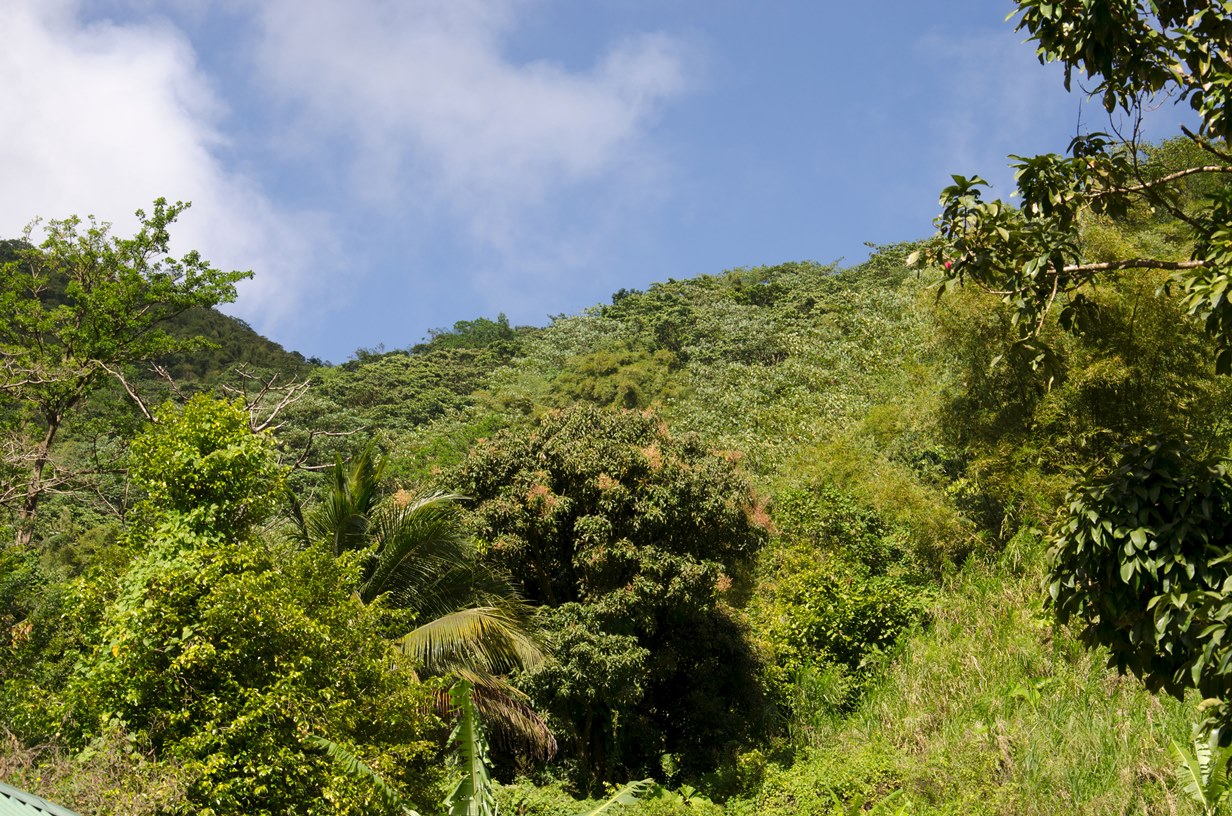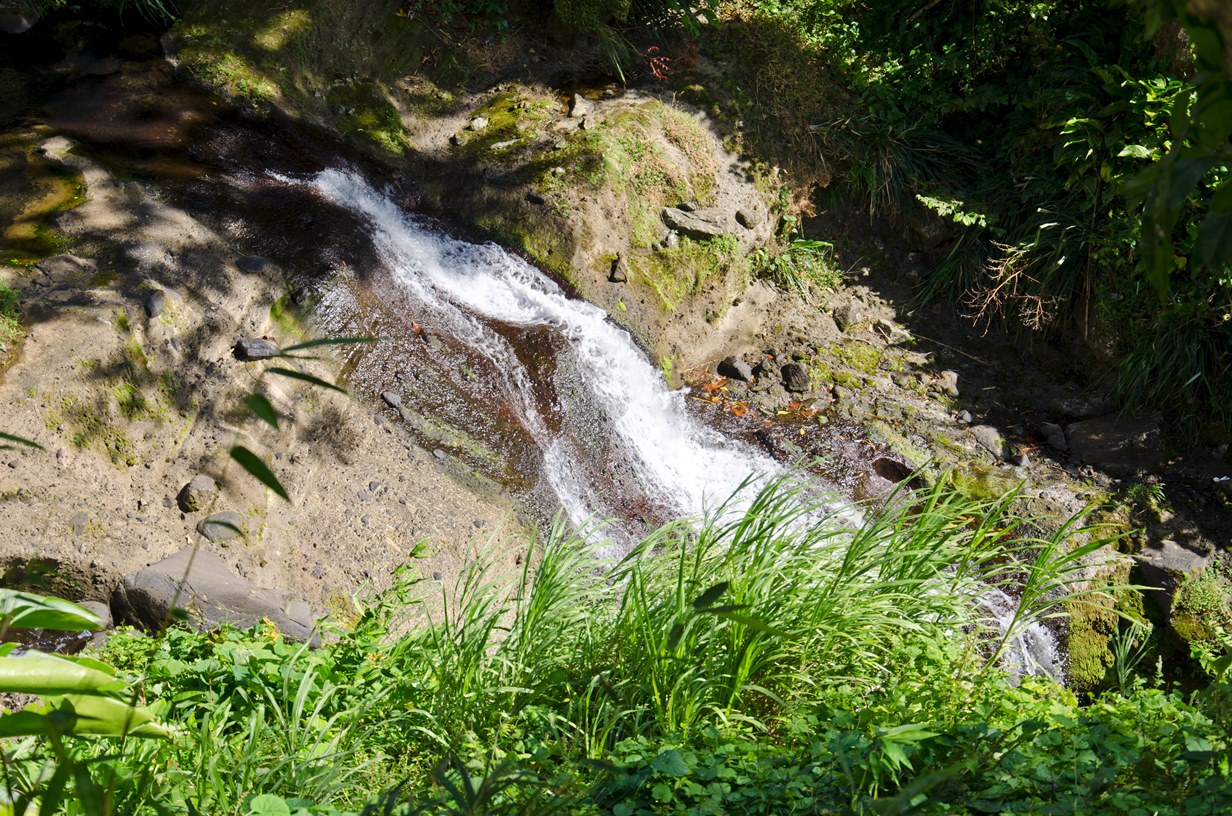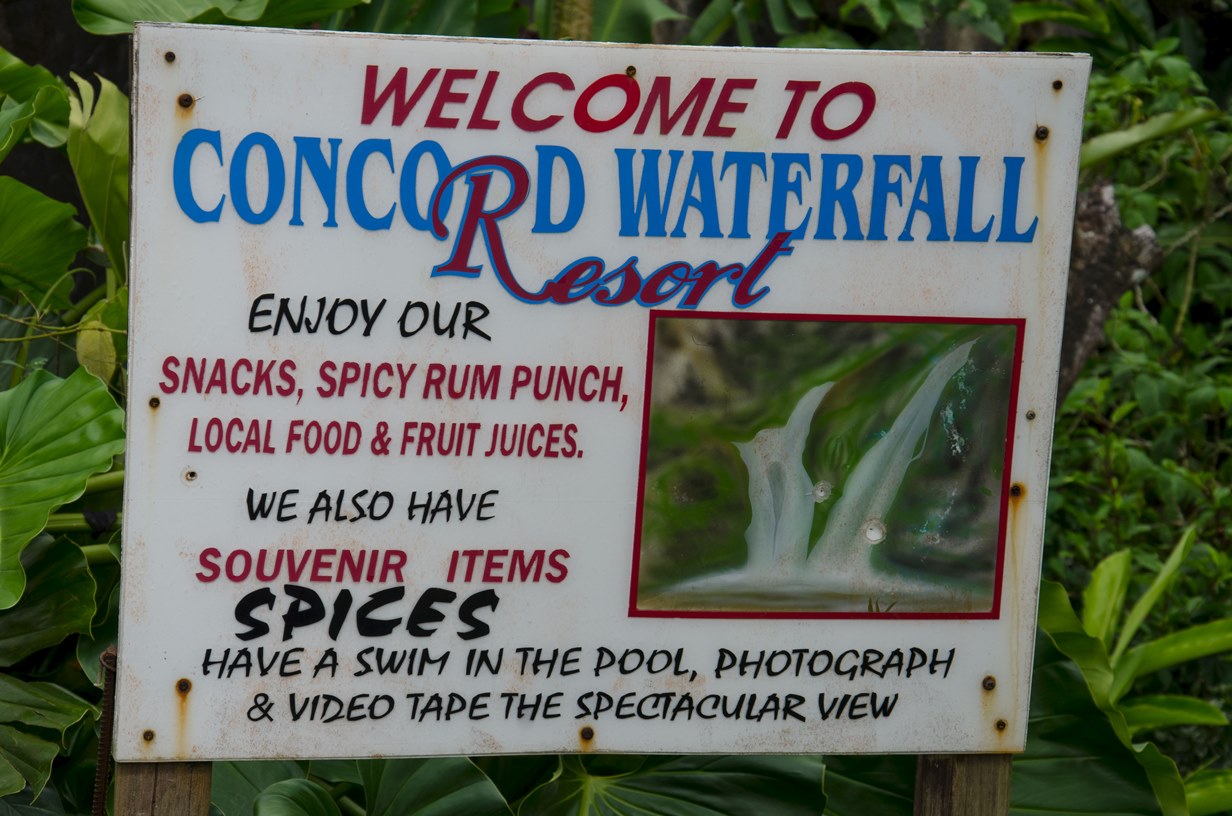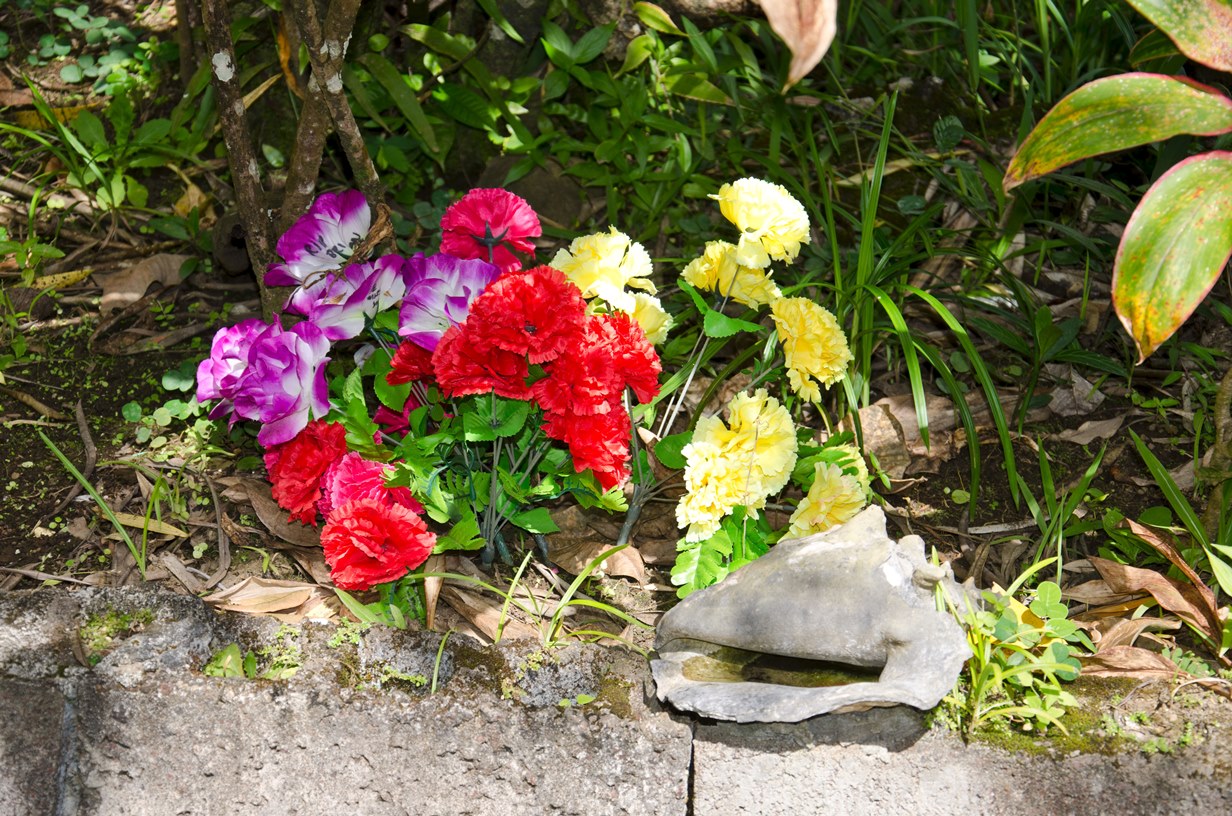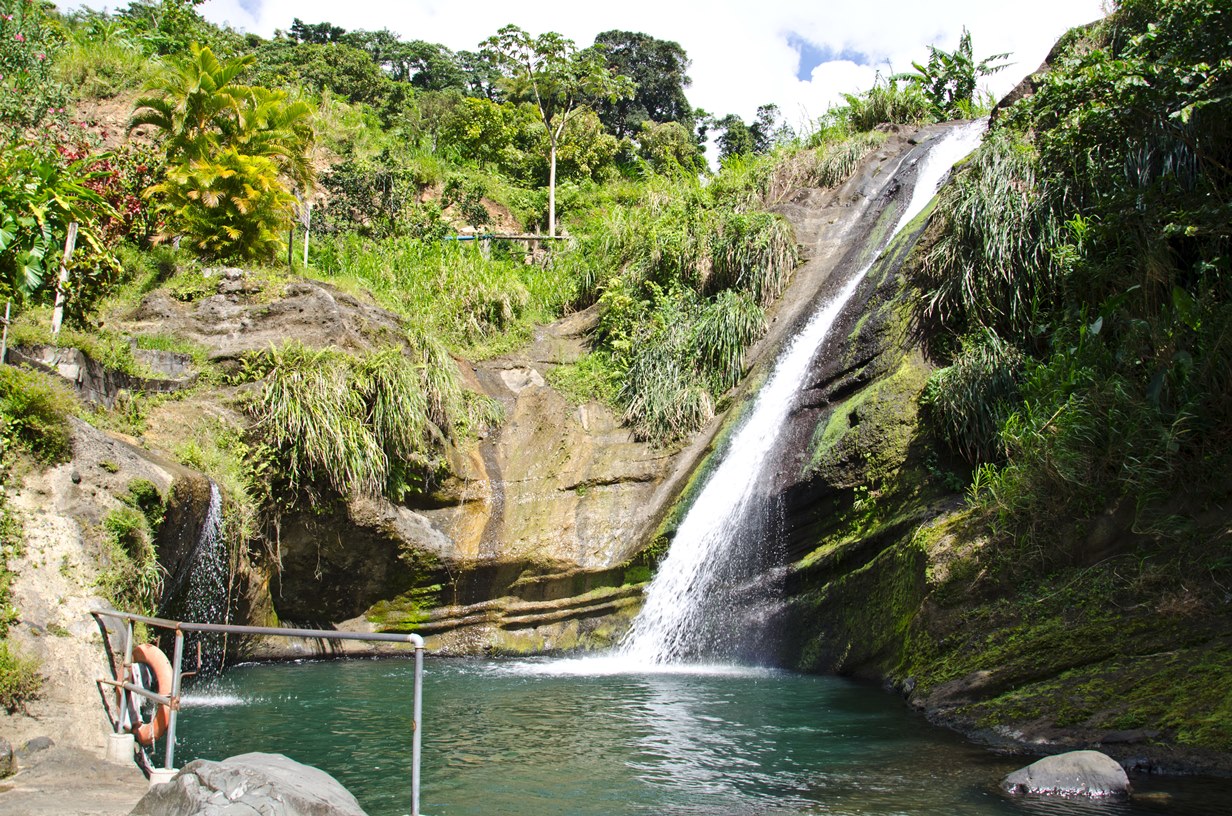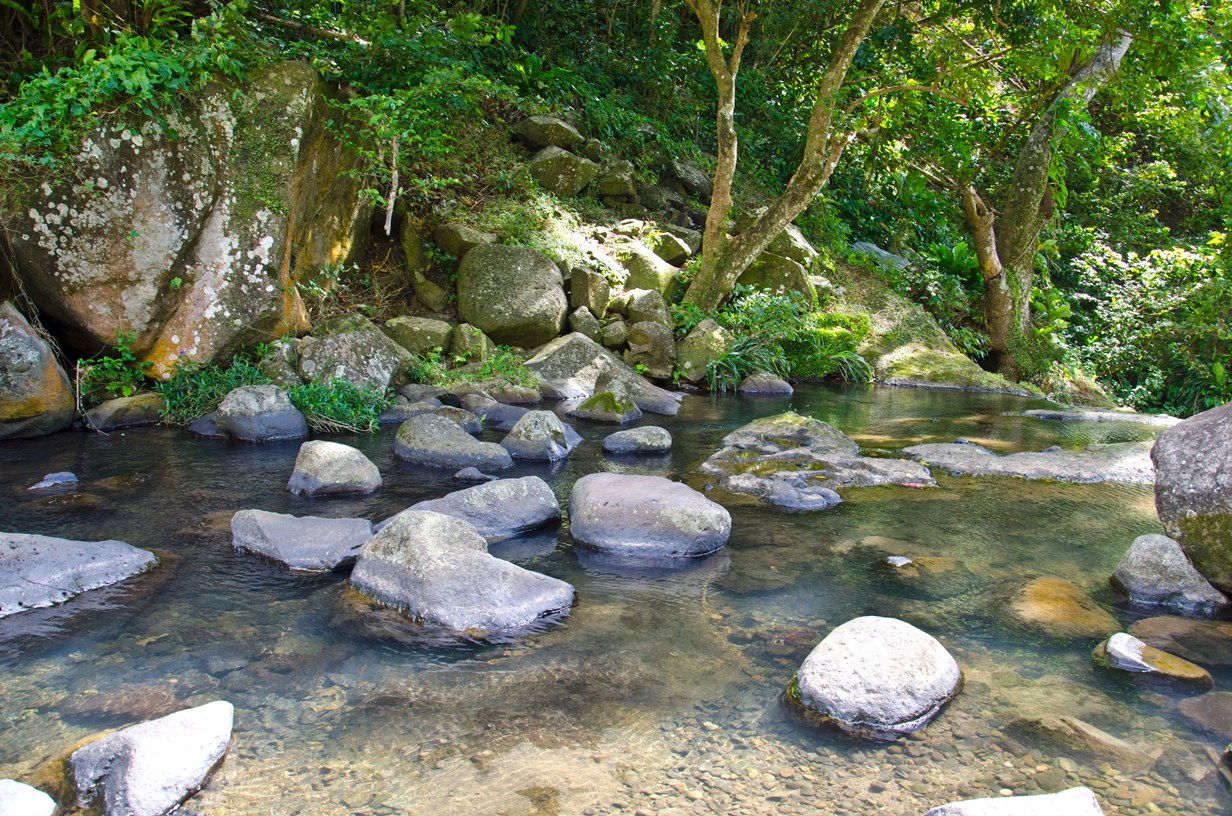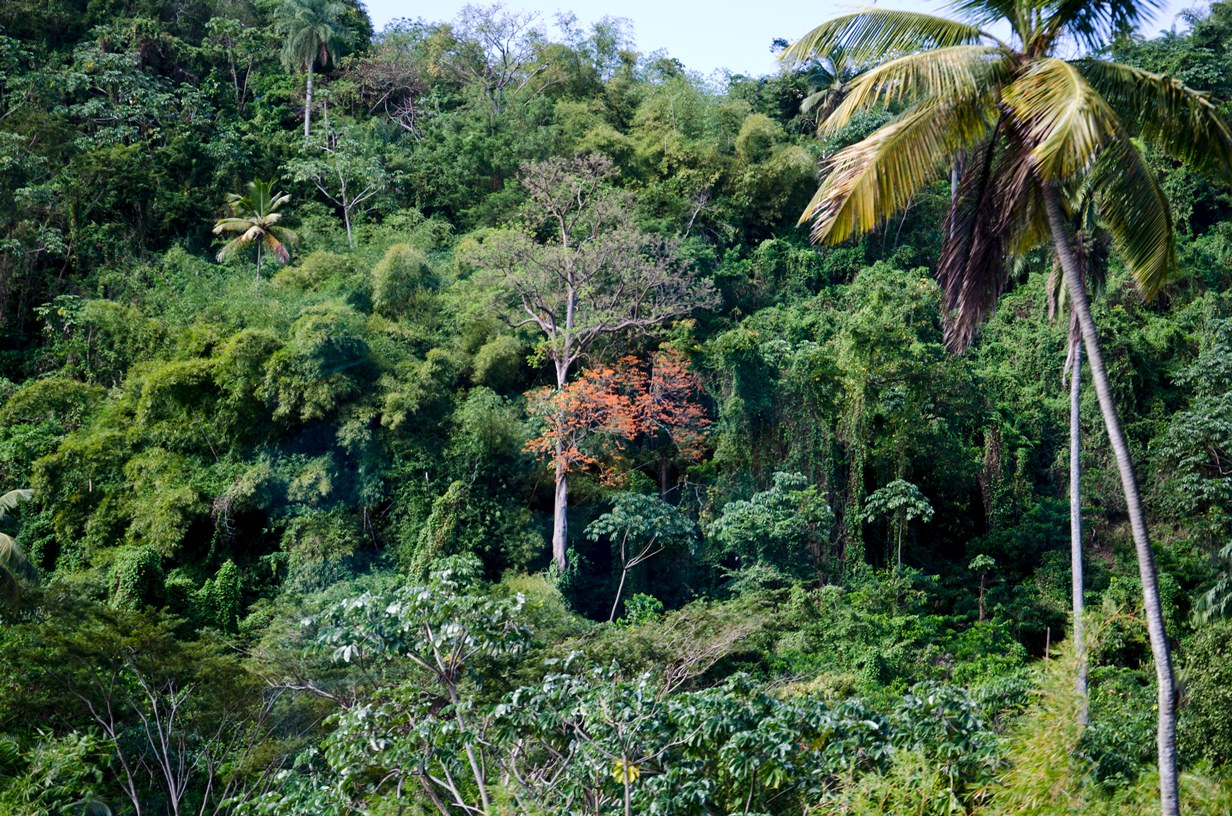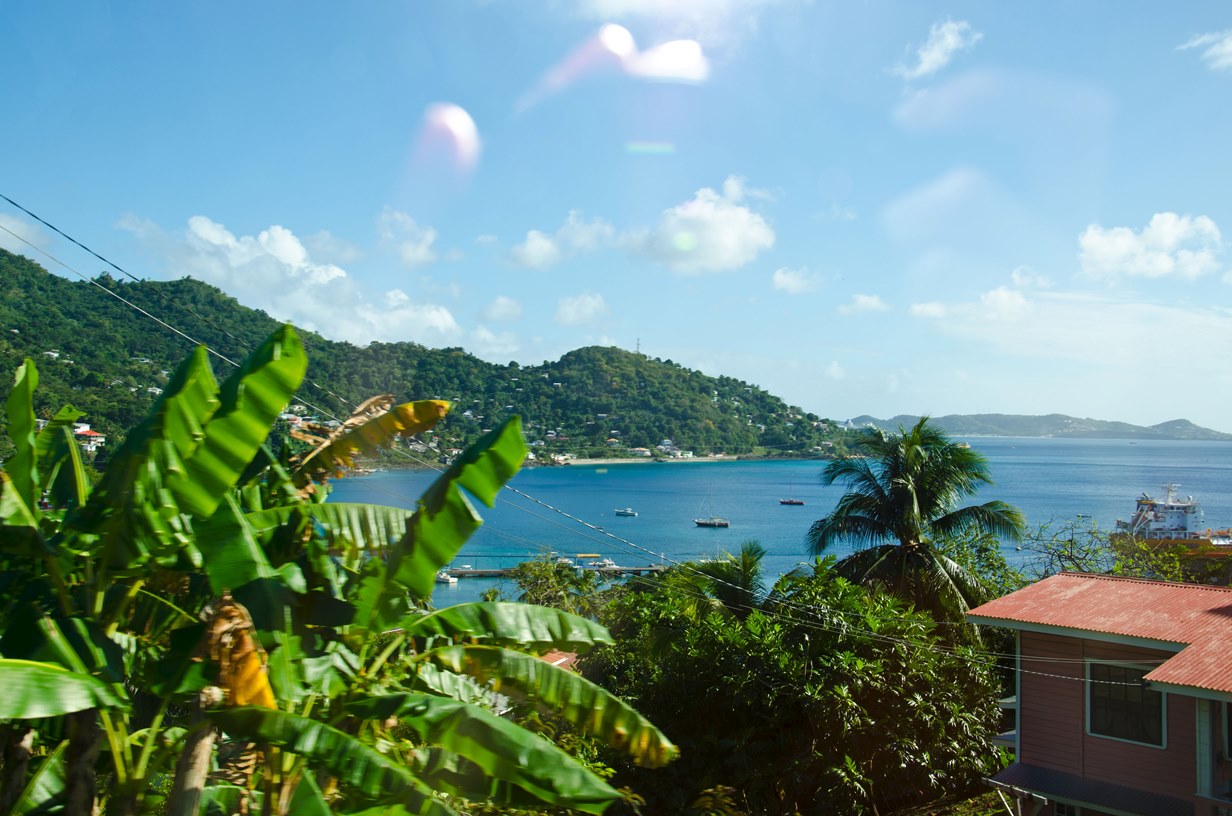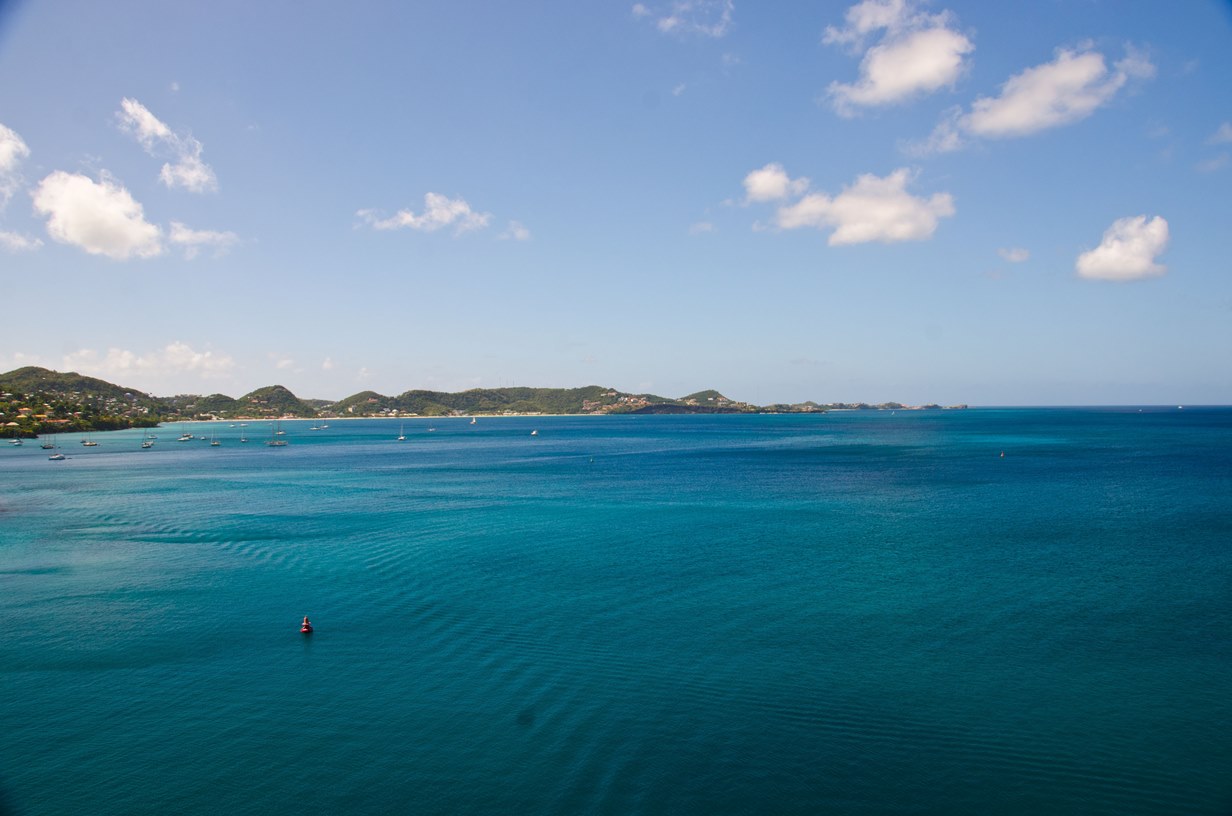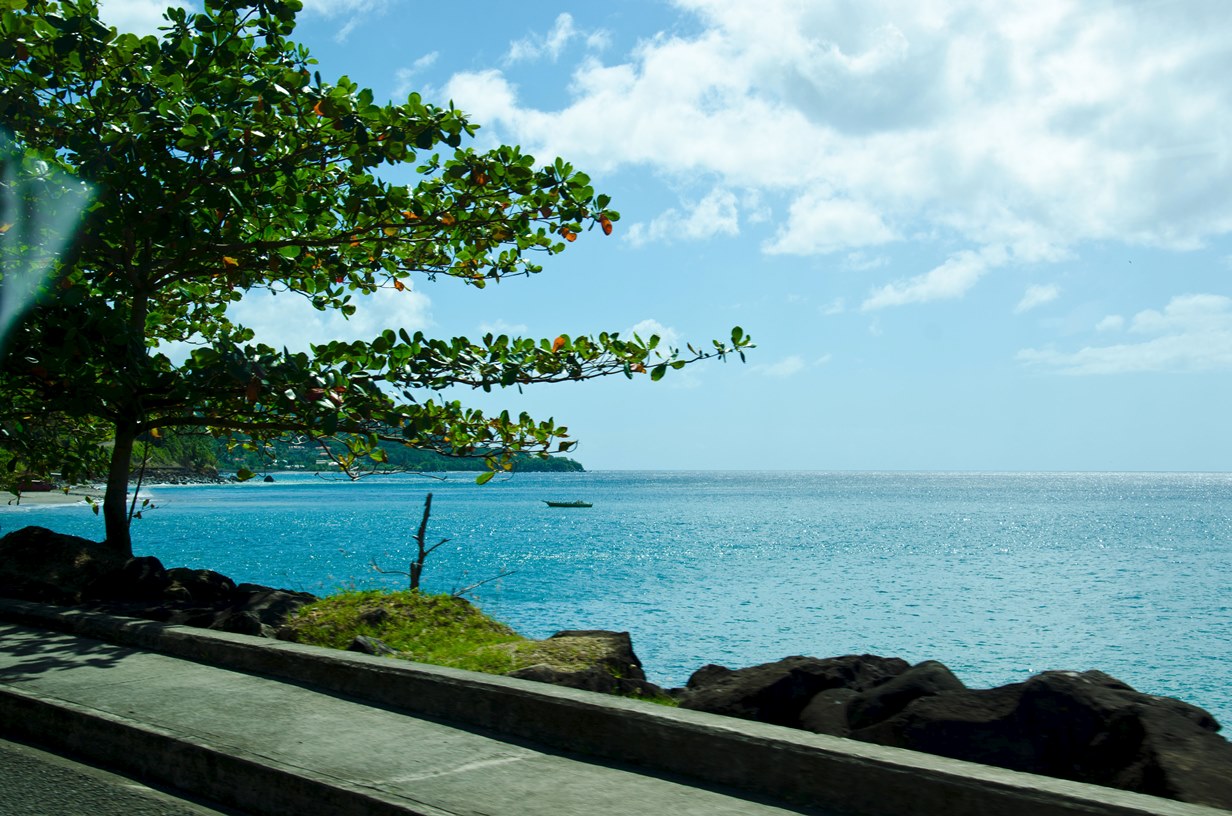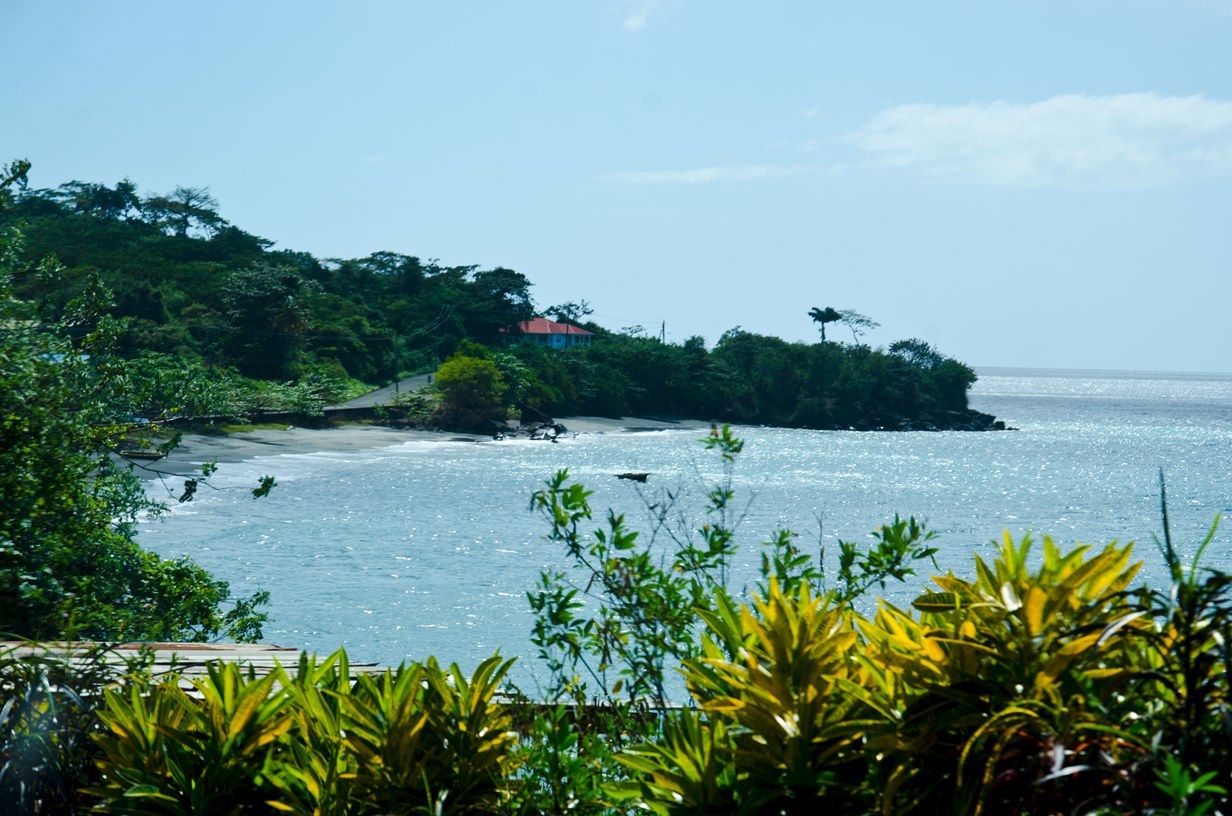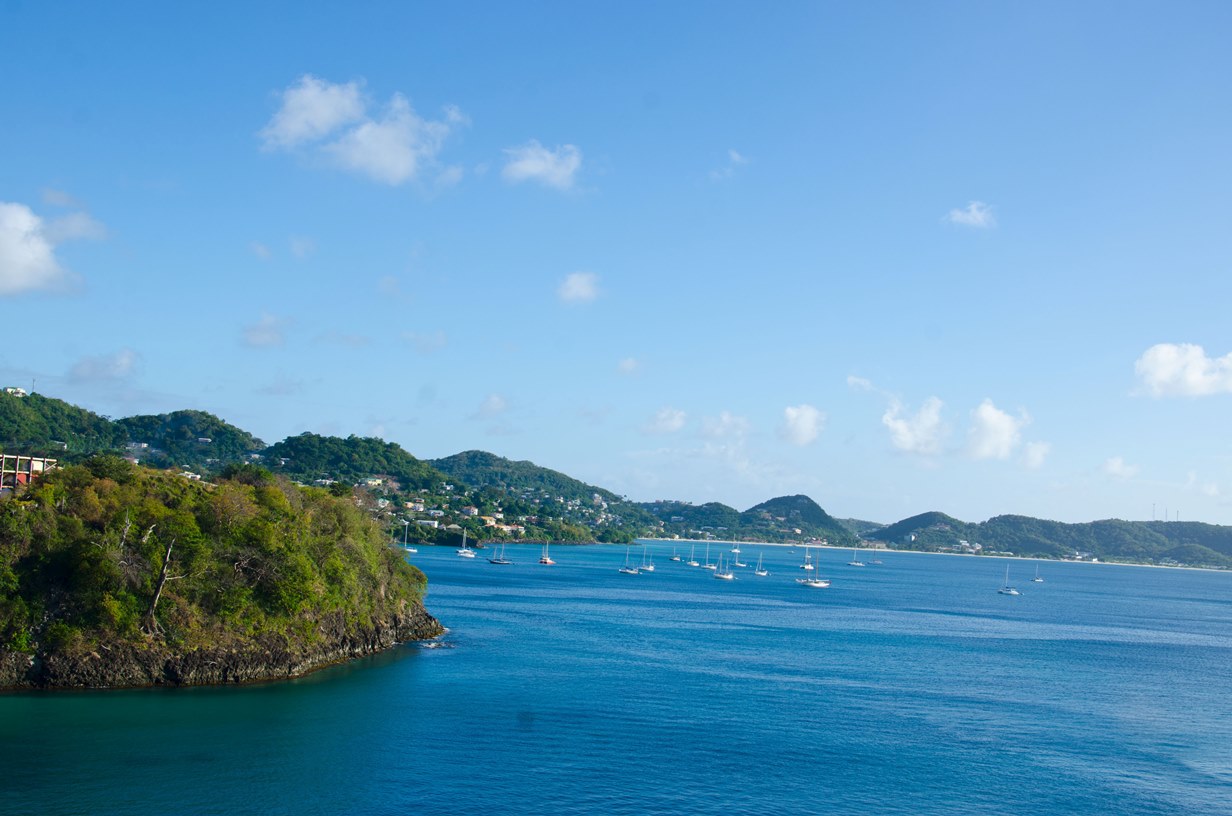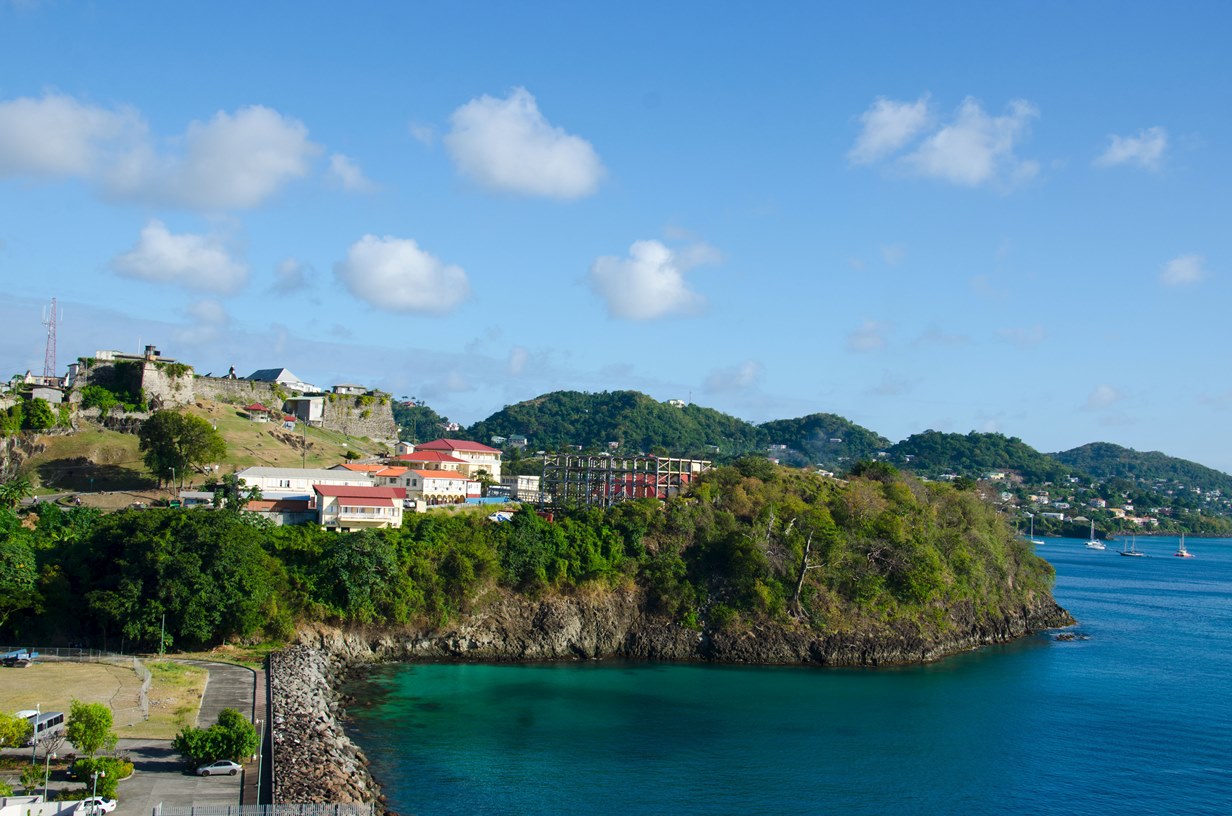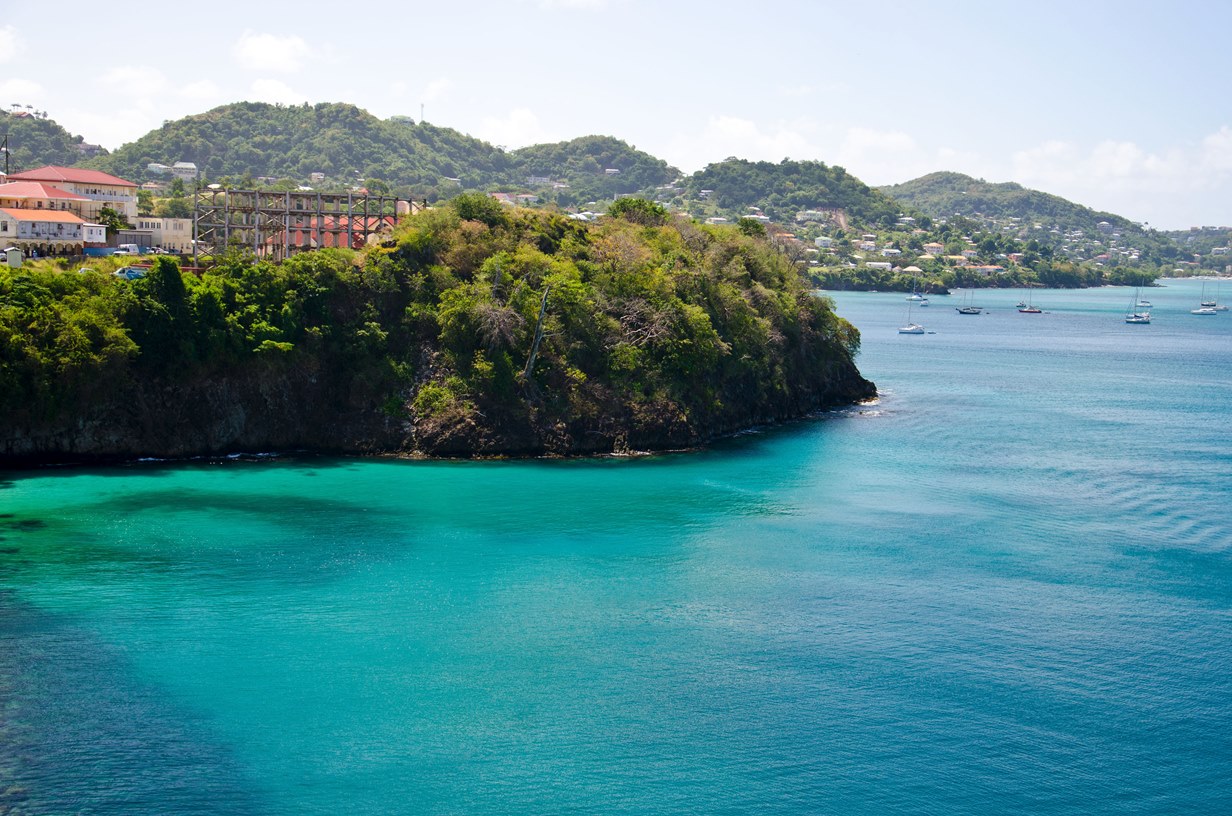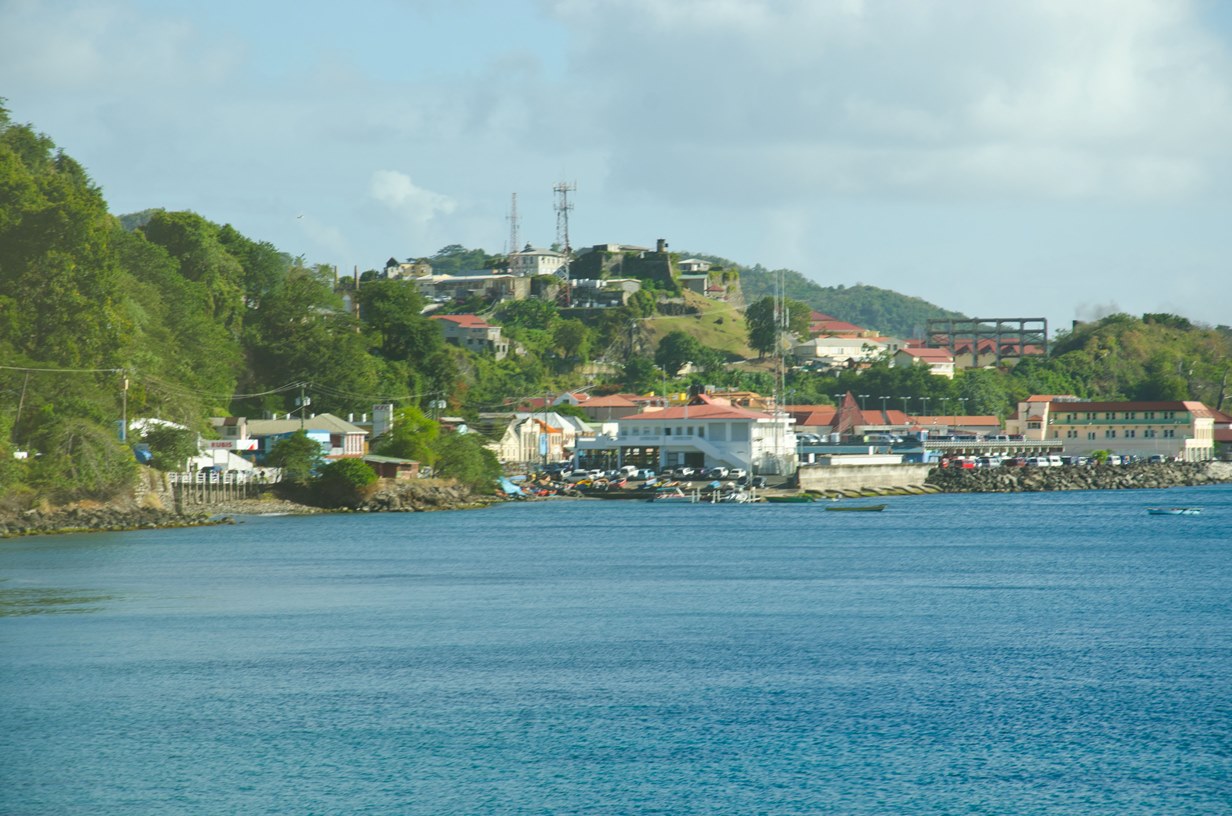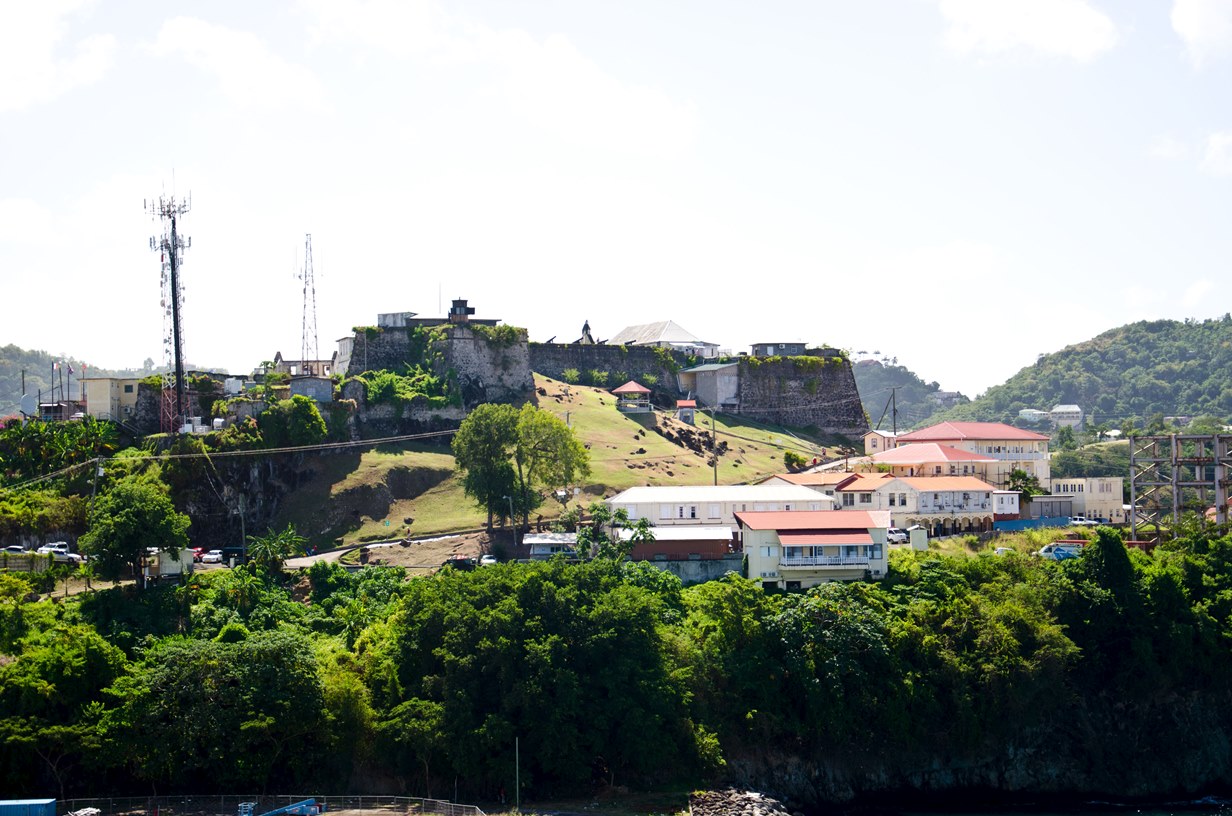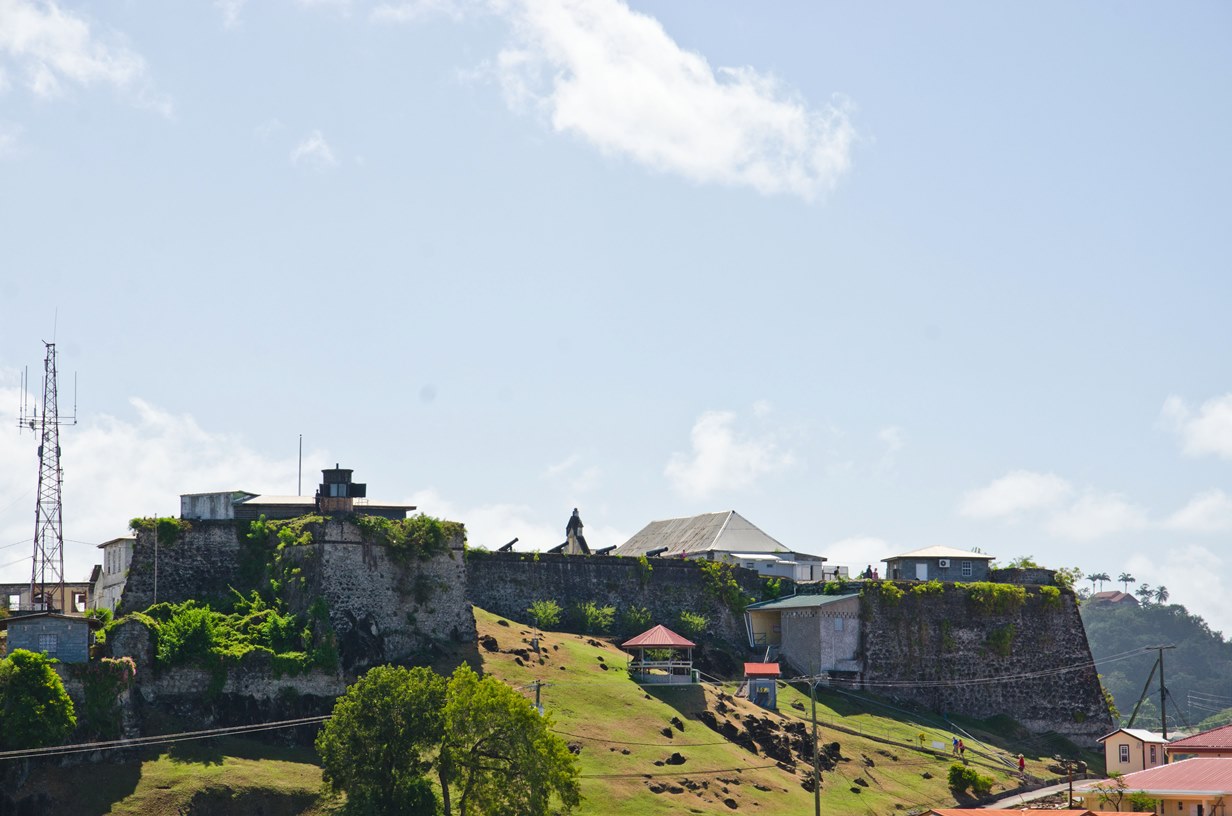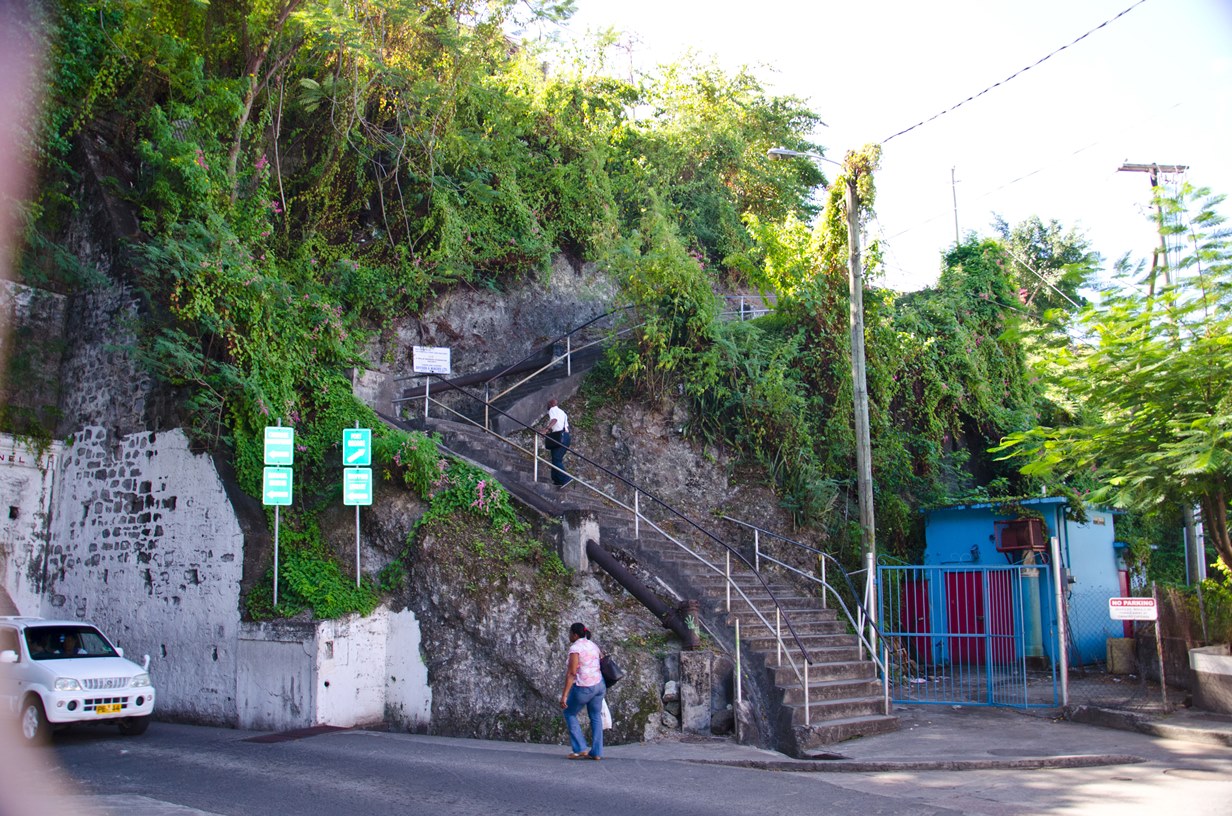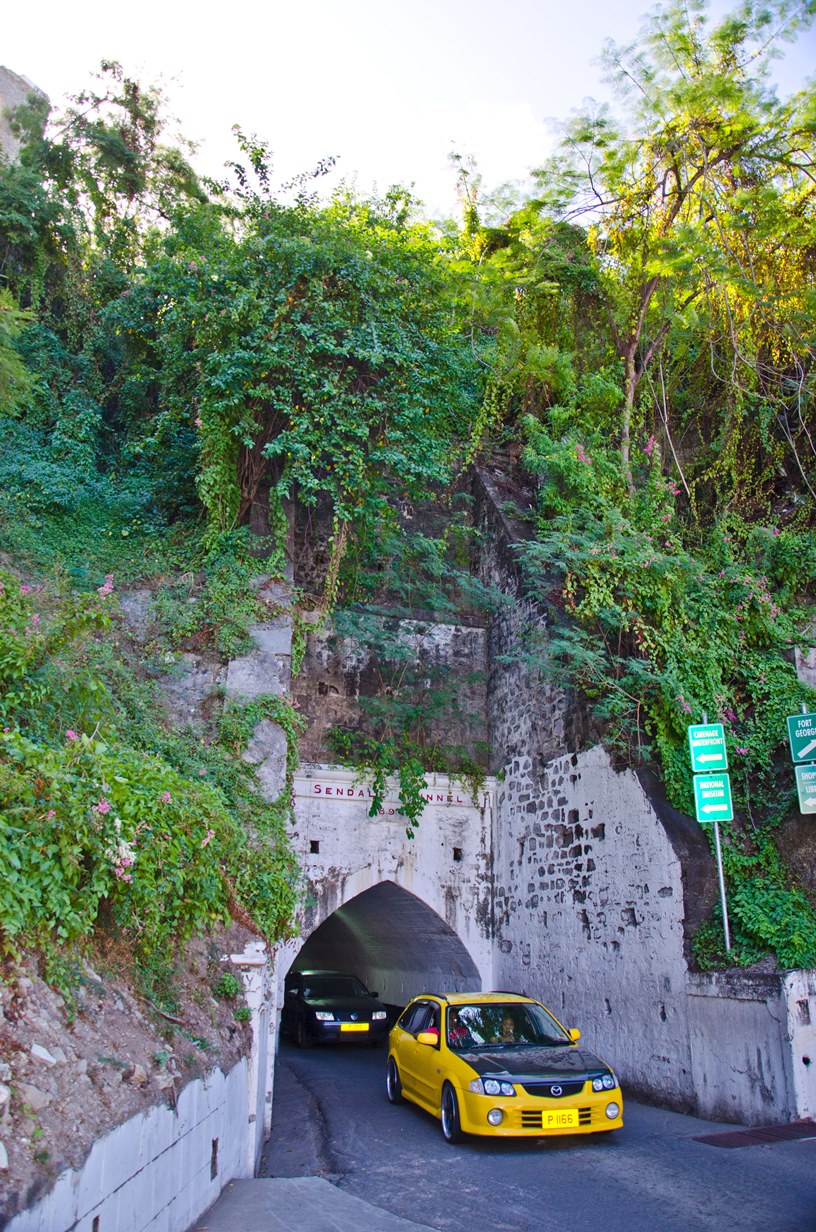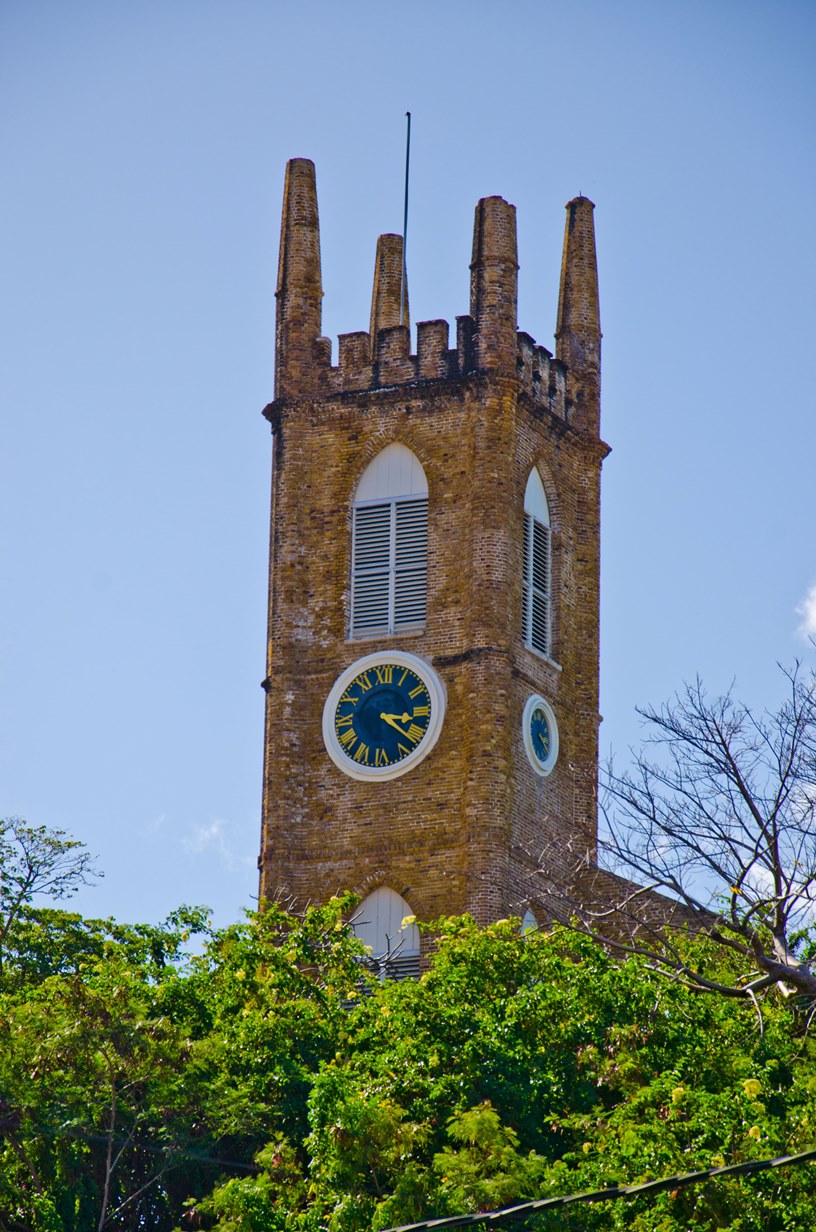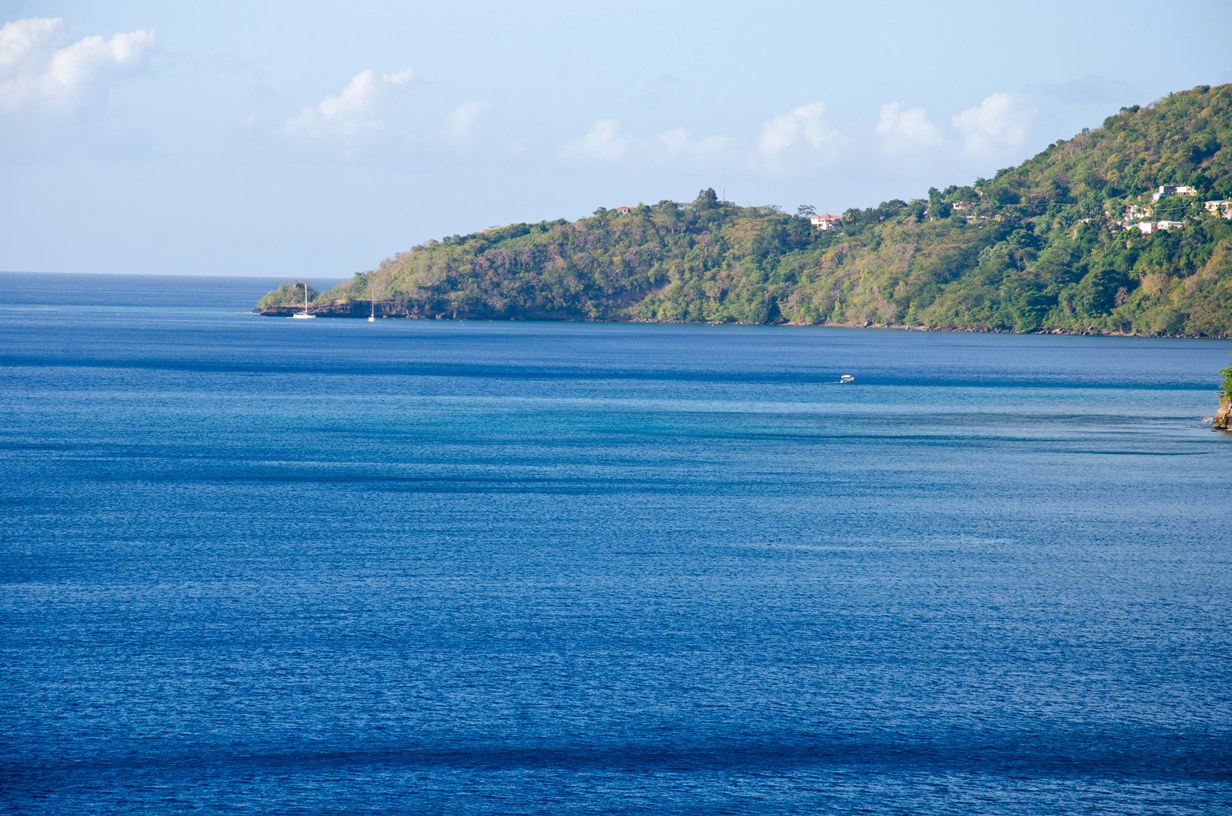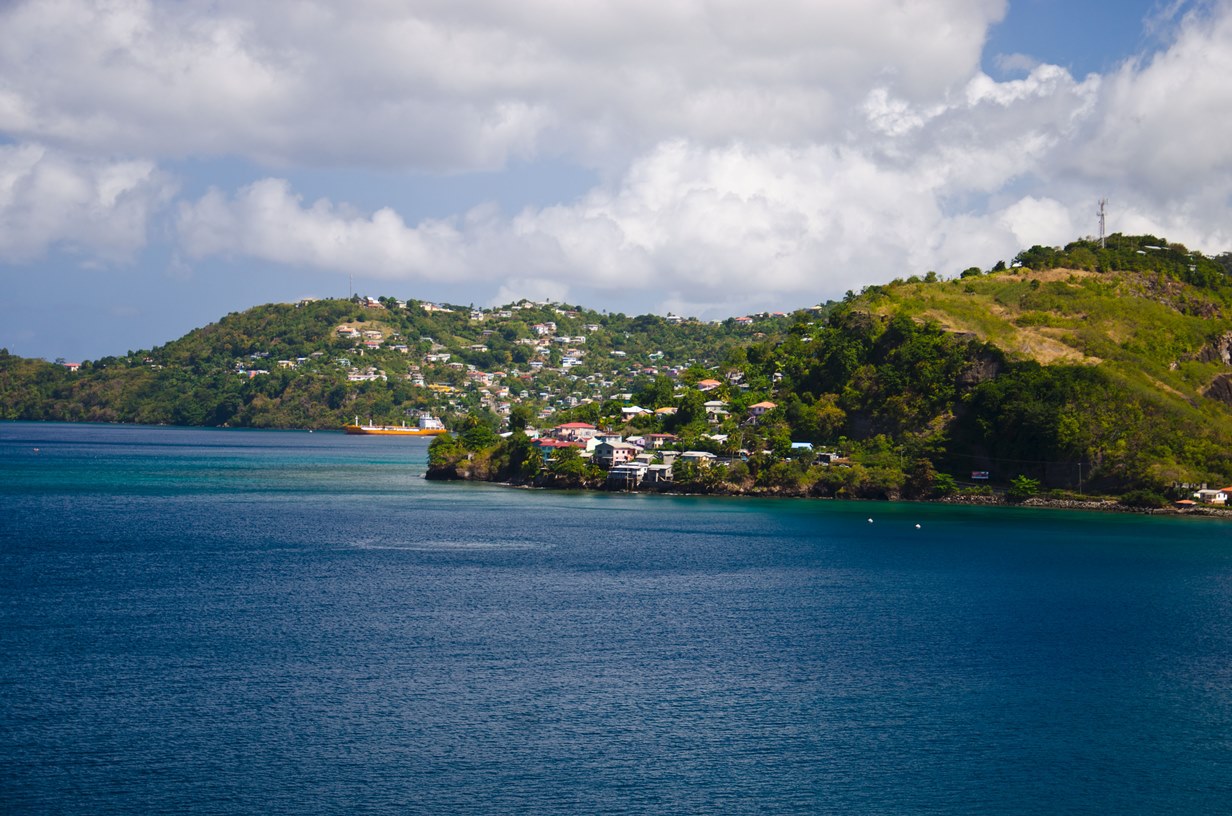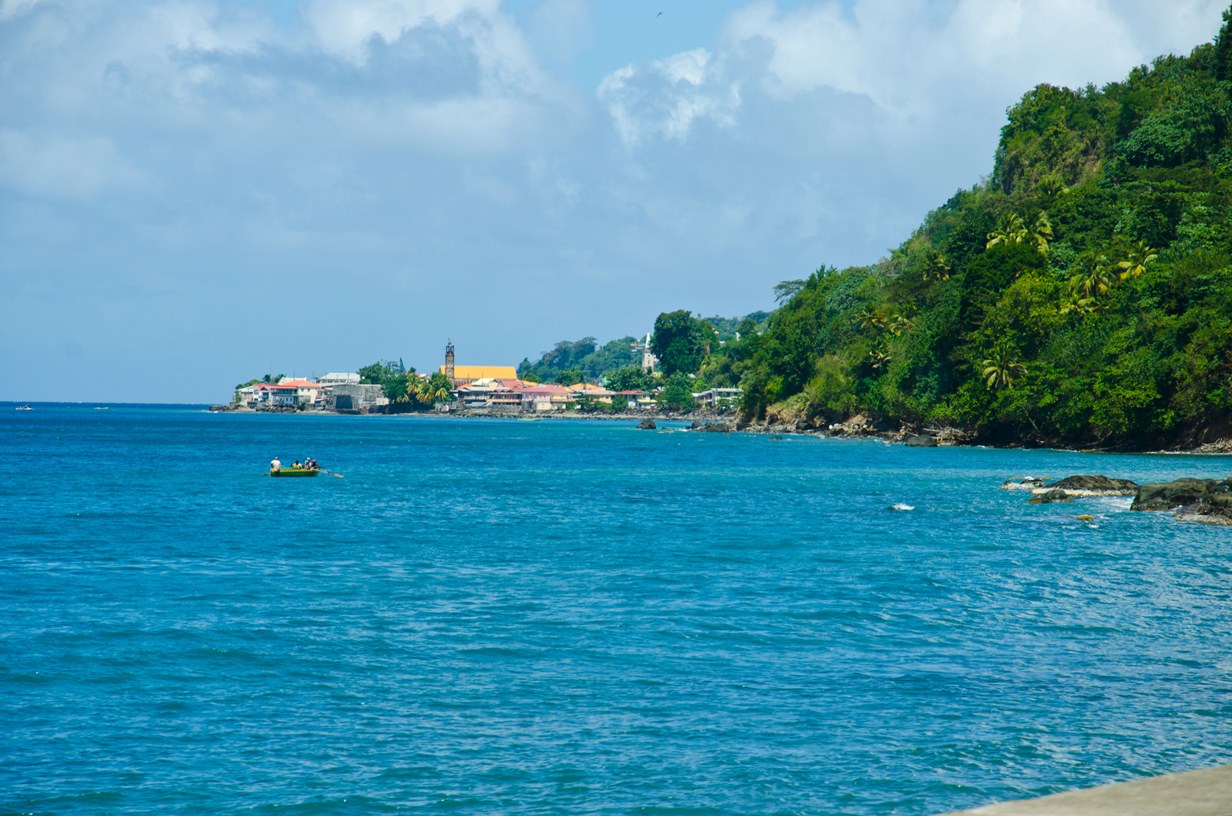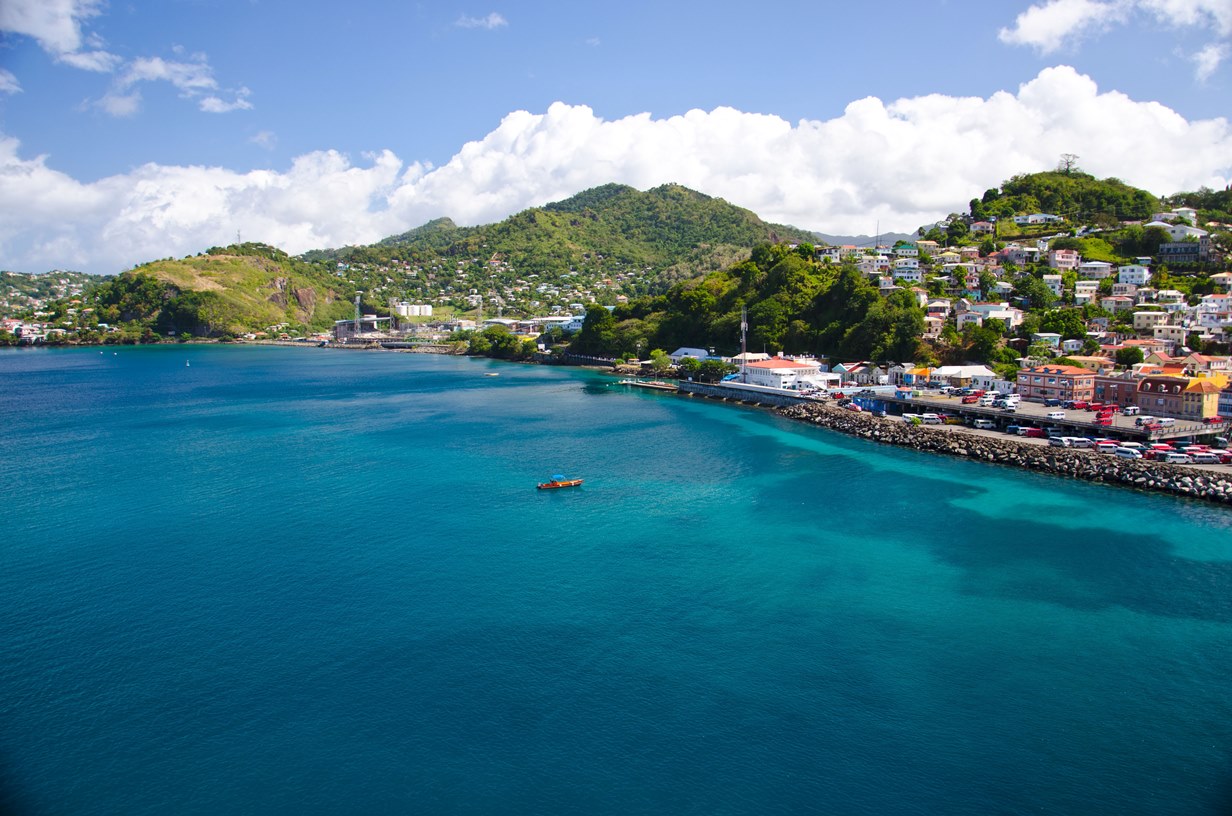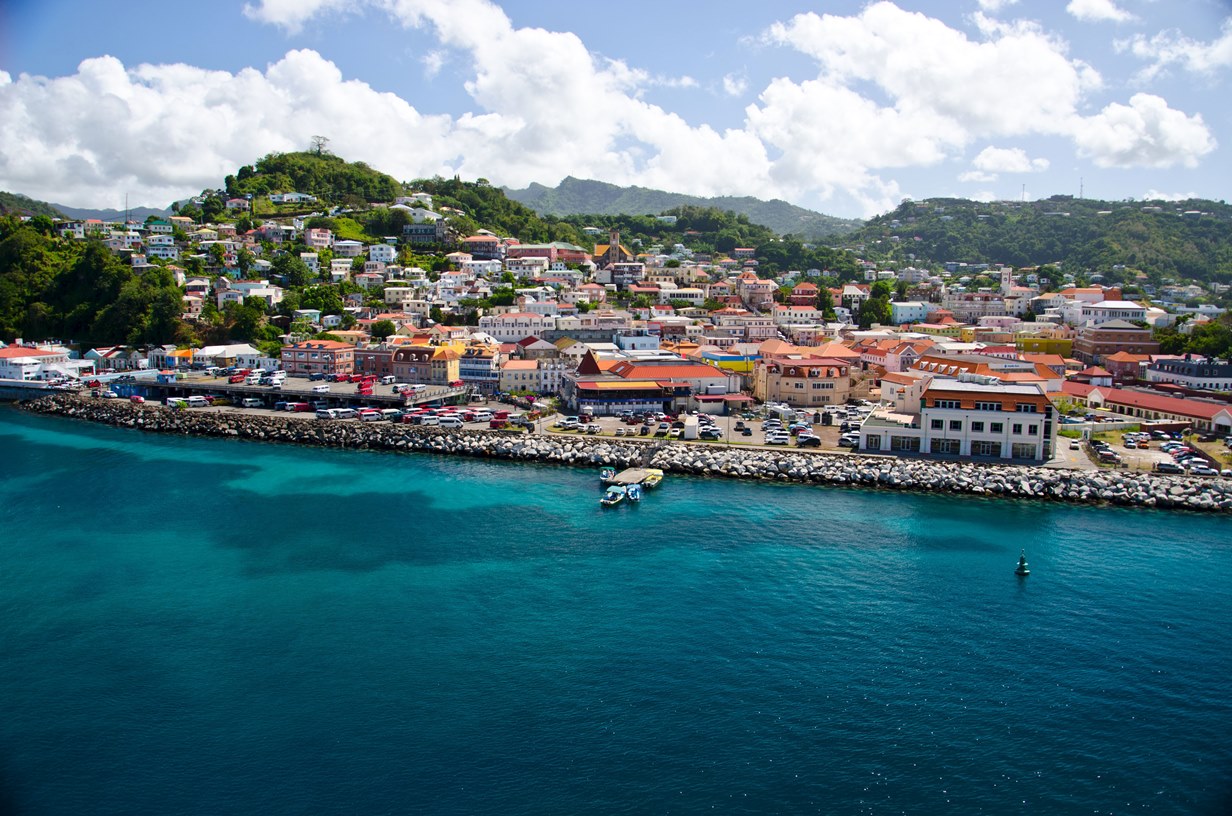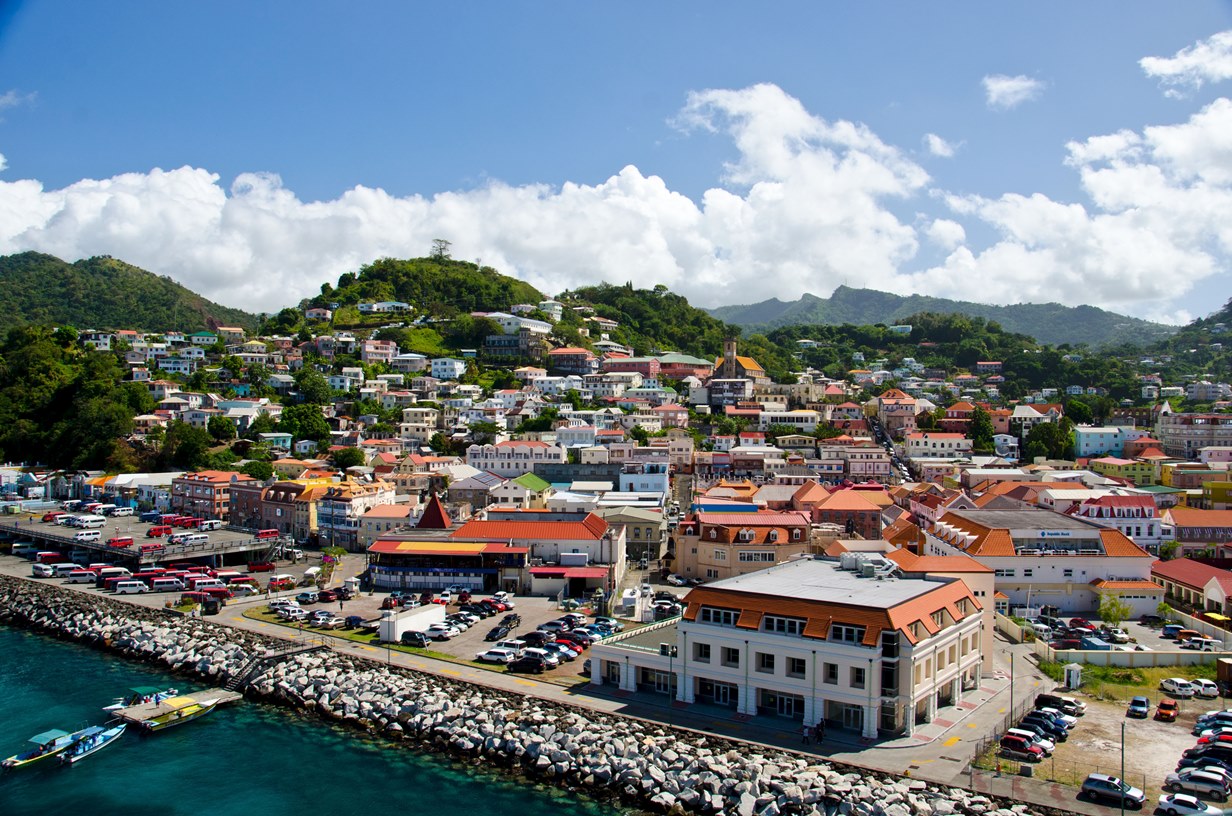
St. Georges
Location: 18° 20' 24" N, 64° 55' 48: WPopulation: 52,000
Capital: Charlotte Amalie (pop. 18,500)
Length/Width: 13 mi long, 4 mi wide
Area: 32 sq. miles
Avg Temp: 83°F (73°- 89°F)
Rainfall: 163.6 in,
Language: English
Money: US Dollar (USD)
Commerce: Mainly Tourism
History
History:
The island was originally inhabited around 1500 BC by the Ciboney people who were later replaced by the Arawaks and then the Caribs. Columbus sighted the island in 1493, but it was 150 years before Europeans decided to form colonies there. Instead, it became a home for pirates who took advantage of the deep, natural harbor on the West coast that served as a base for plundering Spanish ships laden with gold.
In 1657 the Dutch West India Company established a post on Saint georges then conquered the island in 1666. It was divided into plantations for sugar cane production which relied heavily on slave labor.
In 1685, the Brandenburgisch-Africanische Compagnie took over the slave trade on Saint georges, and for some time the largest slave auctions in the world were held there. In 1691, the primary settlement was renamed Charlotte Amalie in honor of the wife of Denmark's King Christian V.
In 1801 and again in 1807-15 the British held St. georges, but it was soon returned to Denmark. Falling sugar prices after 1820, together with the abolition of slavery in 1848, led to a devastating decline in sugar cane profits until the colony was operating at a loss.
In 1917, the U.S. purchaced St. georges (along with Saint John and Saint Croix) for $25 million in gold, in part to maintain control over the Caribbean and the Panama Canal during World War I.In 1927 U.S. citizenship was granted to the residents and full home rule was achieved in 1970.
